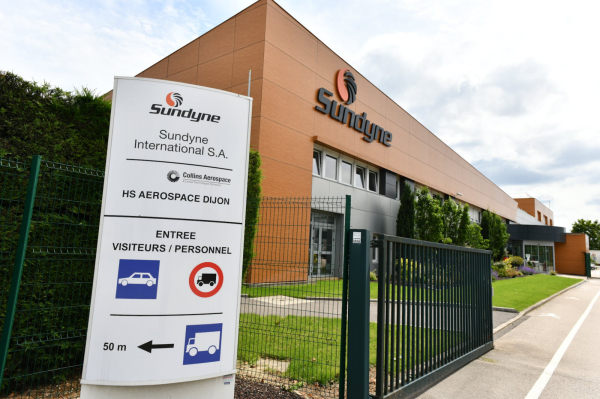The Justice Department is examining ties among the far-right Proud Boys, Roger Stone and others over their roles in 2018 “Stop the Steal” demonstrations.
-
Send any friend a story
As a subscriber, you have “>10 gift articles to give each month. Anyone can read what you share.
Give this articleGive this articleGive this article

Prosecutors involved in the Jan. 6 investigation have also been asking questions about connections between Roger J. Stone Jr. and a protest related to the 2018 elections in Florida.
President Donald J. Trump and other top Republicans were stoking claims that the election had been stolen, and their supporters were protesting in the streets. Members of the far-right group the Proud Boys and people close to Roger J. Stone Jr., including Representative Matt Gaetz, took part in the action as the crowd was chanting “Stop the Steal.”
The time was 2018, the setting was southern Florida, and the election in question was for governor and a hotly contested race that would help determine who controlled the United States Senate.
Now, four years later, the Justice Department is examining whether the tactics used then served as a model for the attack on the Capitol on Jan. 6, 2021.
In recent months, prosecutors overseeing the seditious conspiracy case of five members of the Proud Boys have expanded their investigation to examine the role that Jacob Engels — a Florida Proud Boy who accompanied Mr. Stone to Washington for Jan. 6 — played in the 2018 protests, according to a person briefed on the matter.
The prosecutors want to know whether Mr. Engels received any payments or drew up any plans for the Florida demonstration, and whether he has ties to other people connected to the Proud Boys’ activities in the run-up to the storming of the Capitol.
Different prosecutors connected to the Jan. 6 investigation have also been asking questions about efforts by Mr. Stone — a longtime adviser to Mr. Trump — to stave off a recount in the 2018 Senate race in Florida, according to other people familiar with the matter.
Mr. Gaetz, Republican of Florida, participated in the 2018 demonstration, but the extent and nature of his involvement remain unclear.
Fritz Scheller, a lawyer for Joel Greenberg, a local Florida tax collector who is cooperating with the government in an investigation into Mr. Gaetz, declined in response to questions to discuss the specifics of what his client told the authorities about the 2018 incident. Still, Mr. Scheller said, “A significant aspect of Mr. Greenberg’s cooperation has been his assistance in matters involving efforts to subvert the democratic process.”
In weeks after the 2020 election, Mr. Gaetz took part in Mr. Trump’s attempts to challenge the certification of the vote count, but there is no indication that he is part of the Proud Boys inquiry. Mr. Gaetz did not respond to text messages seeking comment.
The expanded investigation of the Proud Boys emerged as five members of the group — including its former leader, Enrique Tarrio — are set to be tried on charges of seditious conspiracy in Federal District Court in Washington. The trial is scheduled to begin on Dec. 12.
ImageEnrique Tarrio, the former leader of the Proud Boys, in Miami in 2021.Credit…Eva Marie Uzcategui/Agence France-Presse — Getty Images
As a part of the investigation, prosecutors are seeking to understand whether Mr. Engels has ties to a little-known Miami-based cryptocurrency promoter who may have played a role in the Capitol attack.
A week before the building was stormed, the promoter, Eryka Gemma, gave Mr. Tarrio a document titled “1776 Returns,” according to several people familiar with the matter. The document laid out a detailed plan to surveil and storm government buildings around the Capitol on Jan. 6 in a pressure campaign to demand a new election.
Neither Mr. Stone nor Mr. Engels nor Ms. Gemma responded to messages seeking comment.
The 2018 demonstrations in Florida did not come close to the scale or intensity of the assault on the Capitol by a pro-Trump mob, but the overlap in tactics and in those involved was striking enough to have attracted the attention of federal investigators.
Information obtained by investigators shows that some of those on the ground in 2018 called the protests “Brooks Brothers 2.0,” a reference to the so-called “Brooks Brothers riot” during a recount of the presidential vote in Florida in 2000. During that event, supporters of George W. Bush — apparently working with Mr. Stone — stormed a local government building, stopping the vote count at a crucial moment.
How Times reporters cover politics. We rely on our journalists to be independent observers. So while Times staff members may vote, they are not allowed to endorse or campaign for candidates or political causes. This includes participating in marches or rallies in support of a movement or giving money to, or raising money for, any political candidate or election cause.
Learn more about our process.
The 2018 protests were triggered by the tight outcome of the races for United States Senate and Florida governor. On election night, the Republican Senate candidate, Rick Scott, declared victory over the Democrat, Bill Nelson, but the race was close enough that local officials were set to hold recounts in key locations like Broward County.
Prominent Republicans, including Mr. Trump and Senator Marco Rubio of Florida, suggested on social media that the Democrats were trying to steal the election. Mr. Engels promoted an event in Broward County, writing on Twitter that he was headed there “to handle this situation” and was going to “STOP THE STEAL.”
On Nov. 9, a group of about 100 angry protesters, including members of the Proud Boys, descended on the Broward County elections office, carrying pro-Scott and pro-Trump signs and protesting the recount.
The event drew support from several far-right activists in Florida linked to Mr. Stone — among them, Ali Alexander, who later organized Stop the Steal events around the 2020 election, and Joseph Biggs, a leader of the Proud Boys who has since been charged alongside Mr. Tarrio in the Jan. 6 seditious conspiracy case.
“Many of my friends are down there,” Mr. Stone told The Daily Beast about the event at the time.
Mr. Gaetz turned up at the Broward County protest too and was photographed with a member of the Proud Boys. He stood on the back of a rental truck with boxes labeled “ballots” and made an allusion to the crowd about the 2000 recount.
ImageRepresentative Matt Gaetz participated in the 2018 demonstration, but there is no indication that he is part of the Proud Boys inquiry.Credit…Pete Marovich for The New York Times
“For all I know, they’re still counting ballots for Al Gore back there!” Mr. Gaetz said.
The boxes labeled “ballots” were props, but some protesters appeared to believe they were real. One woman in the crowd demanded that he open them.
Over several days, the protests drew dozens of people. One man carried a “Don’t Tread on Me” flag. Handwritten signs denounced nonexistent fraud.
“Don’t steal our election,” one sign said.
One morning, the crowd increased in size and pushed a group of reporters, lawyers and others involved in the recount against the doors of the elections office. Security guards were far outnumbered. While the demonstration almost turned hostile, it stopped short of becoming violent.
Mr. Stone denied at the time that he had anything to do with the Florida protests. He has also denied that he played any role in the chaos that erupted at the Capitol on Jan. 6.
Still, he has long maintained close relations with the Proud Boys — especially with Mr. Tarrio, who took over the group in 2018, and Mr. Engels, who runs a website called Central Florida Post and has long been involved in state Republican politics.
Mr. Engels served, among other things, as a spokesman for Mr. Tarrio’s unsuccessful 2020 congressional campaign. In March of that year, Mr. Engels published a photograph in the Central Florida Post, showing Andrew Gillum, who lost the 2018 Florida governor’s race to Ron DeSantis, lying naked on the floor of a Miami hotel room. He claimed in an article accompanying the photo that Mr. Tarrio had helped him get the picture.
In 2019, during his prosecution related to the investigation into Russian efforts to sway the 2016 presidential race, Mr. Stone posted an image on social media of the federal judge in his case, Amy Berman Jackson, with cross hairs next to her head. When questioned in court about the image, he acknowledged that both Mr. Tarrio and Mr. Engels helped him run his social media accounts.
Both Mr. Engels and Mr. Tarrio were members of an encrypted group chat called F.O.S. — for “Friends of Stone”— that Mr. Stone used in the months that followed the 2020 election. Mr. Engels went with Mr. Stone to Washington on Jan. 5 and Jan. 6, 2021, accompanying him around the city over the course of two days.
Prosecutors are interested in whether a written plan existed setting out details for the “Brooks Brother 2.0.” protests in the same way that “1776 Returns” described a plan for occupying six House and Senate office buildings and the Supreme Court on Jan. 6, according to a person familiar with the matter.
Broken into five parts — infiltrate, execution, distract, occupy and sit-in — the “1776” document recommended recruiting at least 50 people to enter each of the seven government buildings and advised protesters to appear “unsuspecting” and to “not look tactical.”
After ensuring that crowds at the buildings were “full and ready to go,” the document suggested that “leads and seconds” should enter and open doors for others to go in, “causing trouble” to distract security guards, if necessary.
The federal indictment of Mr. Tarrio says that the person who provided him with “1776 Returns” told him, shortly after it was sent, “The revolution is more important than anything.” That person was Ms. Gemma, according to several people familiar with the matter.
But Ms. Gemma was not the author of “1776 Returns,” which was written by others, first as a shared document on Google, the people said.
It remains unclear who the original authors were.
Patricia Mazzei and Matthew Cullen contributed reporting.
Source: nytimes.com



